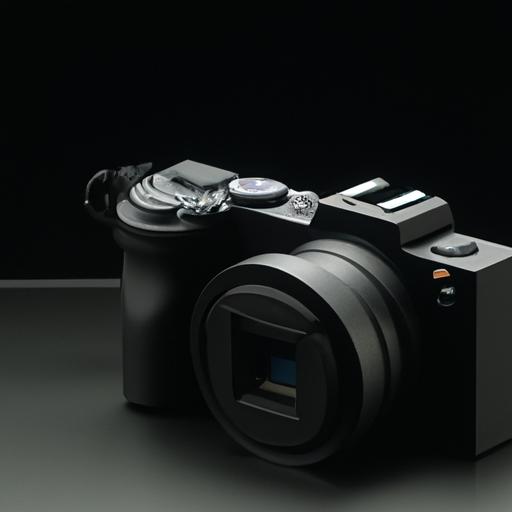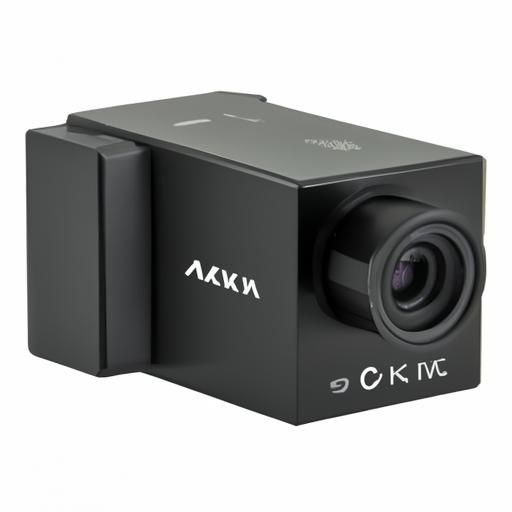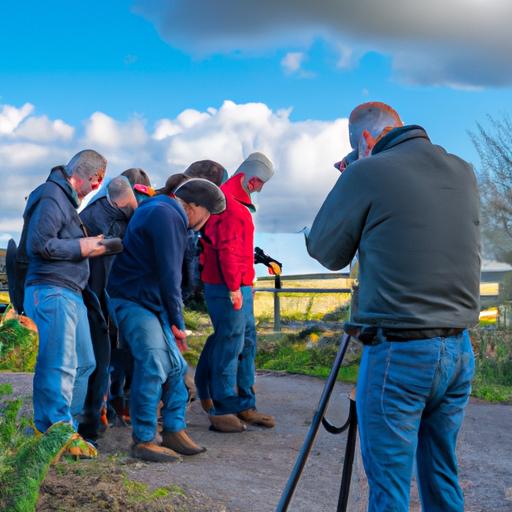Introduction
Mirrorless cameras have taken the world of video production by storm, revolutionizing the way we capture stunning visuals. With their compact size, advanced technology, and exceptional video capabilities, mirrorless cameras have become the go-to choice for filmmakers, vloggers, and content creators alike. In this article, we will delve into the exciting realm of mirrorless cameras for video and explore why selecting the right camera is crucial for achieving professional-quality footage.
As the demand for high-quality video content continues to surge, mirrorless cameras have emerged as the top choice for capturing breathtaking visuals. Unlike traditional DSLRs, mirrorless cameras do not have a complex mirror system. Instead, they utilize a digital viewfinder, allowing for a more streamlined and compact design. This compactness not only makes them incredibly portable but also enhances their versatility in various shooting scenarios.
The importance of choosing the right mirrorless camera for video production cannot be overstated. The camera you select can significantly impact the quality of your footage, the level of control you have over your shots, and even your overall creative expression. With the right camera in your hands, you can unlock a world of possibilities and unleash your artistic vision like never before.
In the following sections, we will dive deeper into the key factors to consider when choosing a mirrorless camera for video, explore the top camera models available, and provide practical tips to elevate your video shooting experience. So, join me as we embark on this exciting journey to find the perfect mirrorless camera for your video endeavors.
Understanding Mirrorless Cameras
Key Differences Between Mirrorless Cameras and DSLRs
When comparing mirrorless cameras to their DSLR counterparts, it’s important to understand the fundamental distinctions that set them apart. Unlike DSLRs, which employ a complex mirror mechanism to reflect light into an optical viewfinder, mirrorless cameras utilize a digital sensor that directly captures the image. This absence of a mirror allows for a more compact and lightweight design, making mirrorless cameras highly portable and ideal for on-the-go shooting.
Mirrorless cameras also excel in terms of video capabilities. With their electronic viewfinders, you can preview the image exactly as it will be captured, offering a real-time representation of exposure, white balance, and other settings. This advantage provides a significant boost to the accuracy and convenience of video shooting, allowing you to fine-tune your composition and ensure optimal results.
Advantages of Mirrorless Cameras for Video Shooting
Mirrorless cameras bring a plethora of benefits to the table when it comes to video shooting. Firstly, their ability to record high-quality video in a compact form factor enables greater flexibility and ease of use. Whether you’re shooting a documentary, vlog, or short film, a mirrorless camera allows you to navigate tight spaces and capture moments with minimal disruption.
Another advantage lies in their advanced autofocus systems. Mirrorless cameras employ sophisticated autofocus technologies, such as hybrid autofocus or phase detection autofocus, which ensure fast and accurate subject tracking. This is particularly useful when shooting dynamic scenes or capturing moving subjects, as it guarantees sharp focus and eliminates the need for manual adjustments.
Furthermore, the absence of a mirror mechanism in mirrorless cameras eliminates the vibrations caused by mirror movement, resulting in smoother footage. However, it’s important to note that not all mirrorless cameras have built-in stabilization systems. Investing in a camera with in-body image stabilization (IBIS) or optical image stabilization (OIS) can further enhance the stability of your videos and mitigate the effects of camera shake.
In summary, mirrorless cameras offer a compact and lightweight alternative to DSLRs, with advanced video capabilities and autofocus systems. Their portability, real-time preview, and superior autofocus make them an excellent choice for video shooting, providing you with the tools necessary to elevate your creative vision.
Factors to Consider When Choosing a Mirrorless Camera for Video
When it comes to selecting the perfect mirrorless camera for video production, several factors should be carefully considered to ensure you make an informed decision. Let’s explore the key factors that can greatly impact your video quality and overall shooting experience.
Sensor Size and Resolution: Impact on Video Quality and Low-Light Performance
The sensor size of a mirrorless camera plays a crucial role in determining the level of detail and image quality in your videos. Generally, larger sensors tend to capture more light and produce better low-light performance, resulting in cleaner and sharper footage. Full-frame sensors are the gold standard for video production, offering exceptional dynamic range and superior image quality. However, APS-C and Micro Four Thirds sensors also deliver impressive results, especially when combined with advanced camera technology and high-quality lenses.
Video Capabilities: Frame Rates, Resolution Options, and Video Formats Supported
A mirrorless camera’s video capabilities are of utmost importance for videographers. Consider the frame rates and resolution options supported by the camera, as they determine the level of flexibility in capturing slow-motion, cinematic shots, or high-resolution footage. Look for cameras that offer a wide range of frame rates, such as 24fps, 30fps, and 60fps, along with multiple resolution options, including 4K and even 8K, for future-proofing your content. Additionally, check the supported video formats, such as H.264, H.265, or RAW, to ensure compatibility with your editing workflow.
Autofocus System: Importance of Reliable and Fast Autofocus for Video Shooting
A reliable and fast autofocus system is crucial for achieving sharp and well-focused videos. Look for mirrorless cameras with advanced autofocus technology, such as phase-detection or hybrid autofocus, which provide accurate subject tracking and quick focus acquisition. Consider the number of autofocus points and their coverage across the frame, as this can greatly enhance your ability to capture moving subjects with precision and maintain focus in challenging shooting conditions.
Image Stabilization: The Significance of Built-in Stabilization for Smoother Footage
Camera shake can ruin an otherwise stunning video. Built-in image stabilization, whether through sensor-shift or lens-based stabilization, can compensate for unintentional movements and deliver smoother, more professional-looking footage. Look for cameras with effective stabilization systems that offer both in-body and lens-based stabilization for optimal results, especially if you frequently shoot handheld or in dynamic environments.
Connectivity Options: HDMI Output, Audio Input, and Other Features for Enhanced Video Production
Consider the connectivity options offered by the mirrorless camera to ensure compatibility with external recording devices, microphones, and other accessories. Look for cameras with HDMI outputs that support clean video output for external recording, as well as audio input options for connecting external microphones. Other desirable features include headphone jacks for monitoring audio and customizable function buttons for quick access to frequently used settings during video shooting.
By carefully considering these factors, you can select a mirrorless camera that aligns with your specific video production needs, enabling you to capture breathtaking footage with ease and creative freedom. Now that we have explored the key factors to consider, let’s move on to the next section, where we will delve into the top mirrorless cameras for video and their standout features.
Top Mirrorless Cameras for Video
When it comes to choosing the perfect mirrorless camera for video production, the market offers a plethora of options to suit every filmmaker’s needs. Let’s dive into the top mirrorless cameras that have garnered rave reviews and have become favorites among video enthusiasts.
Sony Alpha a7S III
The Sony Alpha a7S III is a powerhouse when it comes to video production. With its impressive 12.1-megapixel full-frame sensor, it excels in capturing stunning low-light footage and delivering exceptional dynamic range. The camera supports 4K video recording at up to 120 frames per second (fps), allowing for cinematic slow-motion shots. Its advanced autofocus system ensures precise subject tracking, and the built-in 5-axis image stabilization guarantees smooth footage even in handheld shooting.
Pros:
- Outstanding low-light performance
- High-quality 4K video recording at various frame rates
- Reliable autofocus for tracking moving subjects
- In-body image stabilization eliminates the need for external stabilizers
Cons:
- Limited resolution compared to other camera models
- Higher price point
Panasonic Lumix GH5
The Panasonic Lumix GH5 is a favorite among videographers for its exceptional video capabilities. It boasts a 20.3-megapixel Micro Four Thirds sensor that delivers impressive detail and sharpness. The GH5 supports 4K video recording at up to 60fps and offers various video formats, including the highly regarded 10-bit 4:2:2. Its advanced autofocus system ensures accurate subject tracking, and the camera also features in-body image stabilization for smooth handheld footage.
Pros:
- Excellent video quality with 4K recording and high bitrates
- Versatile video formats and options
- Reliable autofocus performance
- In-body image stabilization for steady shots
Cons:
- Smaller sensor size compared to full-frame cameras
- Limited low-light performance
Canon EOS R5
The Canon EOS R5 is a game-changer in the mirrorless camera world, particularly for video production. With its 45-megapixel full-frame sensor, it delivers stunning image quality and exceptional detail. The camera supports 8K video recording at up to 30fps, as well as 4K recording at up to 120fps, making it a powerhouse for capturing high-resolution footage. The EOS R5 features Canon’s renowned Dual Pixel CMOS AF system for precise autofocus, and it also offers in-body image stabilization for smooth handheld shots.
Pros:
- Impressive image quality with high-resolution sensor
- Cutting-edge 8K and 4K video capabilities
- Reliable autofocus system
- In-body image stabilization for steady footage
Cons:
- Limited recording time for high-resolution modes
- Higher price point
By considering the key features, video capabilities, and pros and cons of these top mirrorless cameras, you can make an informed decision based on your specific video production needs. Whether you prioritize low-light performance, resolution options, or advanced autofocus, these cameras offer an excellent starting point for capturing stunning video footage.
Tips for Shooting Video with a Mirrorless Camera
5.1 Best Practices for Capturing High-Quality Video
When shooting video with your mirrorless camera, it’s essential to follow some best practices to ensure you capture high-quality footage.
- Lighting: Adequate lighting can make a world of difference in your videos. Consider the natural lighting available or invest in lighting equipment to enhance the overall look of your shots.
- Exposure: Pay attention to the exposure settings of your camera. Avoid overexposed or underexposed footage by adjusting the aperture, ISO, and shutter speed accordingly.
- White Balance: Set the white balance to match the lighting conditions to maintain accurate color representation in your videos.
- Audio: Don’t overlook the importance of audio. Invest in an external microphone for better sound quality and reduce background noise during recording.
5.2 Techniques for Achieving Cinematic Effects and Professional-looking Footage
To add a touch of cinematic magic to your videos and make them stand out, consider incorporating these techniques:
- Depth of Field: Experiment with shallow depth of field to create a blurred background and draw attention to your subject.
- Camera Movement: Utilize smooth camera movements such as pans, tilts, and tracking shots to add dynamism and visual interest to your footage.
- Composition: Compose your shots thoughtfully, following the rule of thirds, leading lines, and other composition techniques to create visually appealing frames.
- Slow Motion: Take advantage of your camera’s high frame rate capabilities to capture captivating slow-motion shots that add drama and impact to your videos.
5.3 Advice on Camera Settings, Lens Selection, and Composition
To make the most out of your mirrorless camera for video shooting, consider the following advice:
- Camera Settings: Familiarize yourself with the various settings of your camera, such as picture profiles, custom white balance, and focus modes. Experiment with different settings to achieve the desired look and feel for your videos.
- Lens Selection: Choose lenses that suit your shooting style and desired focal length. Wide-angle lenses are great for capturing expansive scenes, while telephoto lenses can bring distant subjects closer.
- Composition: Pay attention to the framing and composition of your shots. Experiment with different angles and perspectives to tell your story effectively and create visually engaging footage.
By implementing these tips and techniques, you can elevate your video shooting skills and create professional-looking footage with your mirrorless camera. Remember to practice, experiment, and let your creativity shine through your lens.
Conclusion
In conclusion, finding the ideal mirrorless camera for video production is a pivotal step towards achieving cinematic excellence. The rise of mirrorless cameras has revolutionized the way we capture and create stunning visuals, offering exceptional video capabilities in a compact and versatile package. By considering factors such as sensor size, video capabilities, autofocus, image stabilization, and connectivity options, you can narrow down your choices and select a camera that best suits your specific video production needs.
Throughout this article, we have explored the world of mirrorless cameras for video, understanding their advantages over traditional DSLRs and the importance of selecting the right camera model. We have also delved into the top mirrorless cameras available, analyzing their key features and discussing their pros and cons. Armed with this knowledge, you are now equipped to make an informed decision and embark on your video production journey with confidence.
Remember, shooting video with a mirrorless camera requires not only technical knowledge but also a creative flair. Experiment with different camera settings, lens choices, and composition techniques to elevate your video footage and tell captivating stories. Don’t be afraid to push the boundaries and explore your artistic vision.
So, go ahead and choose your perfect mirrorless camera companion, and let your creativity flourish. Whether you’re a professional filmmaker or an aspiring content creator, the right mirrorless camera will empower you to capture breathtaking visuals and bring your video productions to life. Embrace the power of mirrorless technology and embark on a journey towards cinematic excellence.



